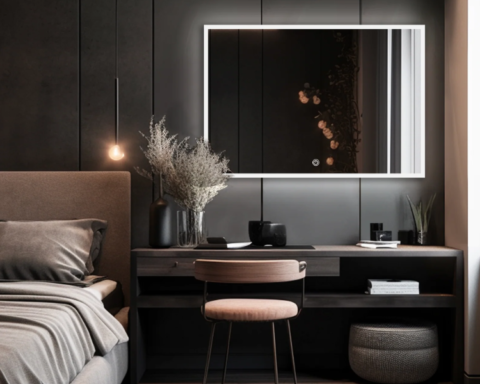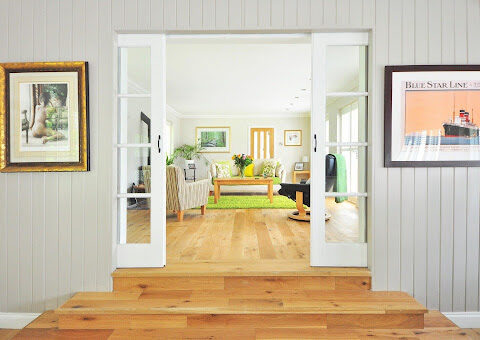Color psychology, the study of hues as a determinant of human behavior, plays a pivotal role in commercial painting. Businesses have long recognized the power of color to influence customer emotions, perceptions, and actions. This article delves into the multifaceted impact of color psychology in commercial painting, exploring its historical context, theoretical foundations, practical applications, and future trends.
Understanding Color Psychology
Historical Context
Color has been a vital aspect of human life and culture for centuries. Ancient Egyptians and Greeks studied the effects of colors and their healing properties. The concept of color psychology gained momentum in the 20th century with the advent of modern psychology and marketing.
Theoretical Foundations
Color psychology is based on the premise that different colors evoke specific responses from people. These responses can be emotional, physiological, and cognitive. Key theories and models that underpin color psychology include:
- The Trichromatic Theory: Proposes that the human eye perceives color through the interaction of three types of cone cells sensitive to red, green, and blue.
- The Opponent-Process Theory: Suggests that color perception is controlled by the activity of two opposing systems: a blue-yellow mechanism and a red-green mechanism.
- The Psychological Primary Colors Theory: Identifies red, yellow, green, and blue as primary colors that elicit fundamental psychological responses.
The Role of Color in Commercial Spaces
Creating Brand Identity
Colors are integral to a brand’s identity. They communicate the brand’s personality, values, and market positioning. For instance:
- Red: Often associated with excitement, passion, and urgency. Brands like Coca-Cola and McDonald’s use red to capture attention and stimulate appetite.
- Blue: Conveys trust, calm, and professionalism. It’s favored by banks and technology companies such as Chase and IBM.
- Green: Symbolizes nature, health, and tranquility. Frequently used by brands in the health and wellness sector, like Whole Foods and Starbucks.
Influencing Customer Behavior
Colors can significantly influence consumer behavior and decision-making processes. They affect how customers perceive and interact with a commercial space:
- Warm Colors (Red, Orange, Yellow):
- Red: Increases heart rate and creates a sense of urgency, making it effective for clearance sales.
- Orange: Encourages social interaction and energy, suitable for social spaces like cafes.
- Yellow: Grabs attention and evokes cheerfulness, often used in retail environments to attract window shoppers.
- Cool Colors (Blue, Green, Purple):
- Blue: Promotes calmness and security, ideal for financial institutions and corporate offices.
- Green: Enhances relaxation and comfort, perfect for spas and wellness centers.
- Purple: Connotes luxury and creativity, used by brands that want to appear sophisticated and artistic.
Enhancing Space Perception
Colors can alter the perception of space within a commercial environment:
- Light Colors: Make small spaces appear larger and more open.
- Dark Colors: Create a sense of intimacy and coziness in large spaces.
- Neutral Colors: Provide a versatile backdrop that highlights other design elements and products.
Practical Applications in Commercial Painting
Retail Stores
With commercial painting services, colors are strategically used to enhance the shopping experience and drive sales:
- Entrance Areas: Bright and inviting colors like yellow and orange attract customers.
- Product Displays: Contrasting colors are used to highlight specific products.
- Checkout Areas: Calming colors such as blue and green reduce stress during payment.
Restaurants and Cafes
Colors in dining establishments influence appetite and social behavior:
- Red and Orange: Stimulate appetite and encourage quicker turnover.
- Green and Earth Tones: Promote a relaxing atmosphere and longer stays.
- Blue and Purple: Often avoided in food settings as they can suppress appetite.
Offices and Workspaces
The color scheme in work environments impacts productivity and employee well-being:
- Blue and Green: Enhance focus and reduce stress.
- Yellow: Boosts creativity and energy.
- Neutral Colors: Create a professional and clean appearance.
Healthcare Facilities
In healthcare settings, colors play a crucial role in patient recovery and comfort:
- Soft Blues and Greens: Promote healing and tranquility.
- Warm Colors: Create a welcoming and comforting environment.
- Neutral Colors: Provide a sense of cleanliness and order.
Future Trends in Commercial Painting and Color Psychology
Sustainable and Eco-friendly Colors
The trend towards sustainability is influencing color choices in commercial painting. Natural and earthy tones are becoming popular as they represent eco-friendliness and health consciousness.
Technological Integration
Advancements in technology are enabling more dynamic use of color in commercial spaces. LED lighting and smart paint can change colors based on time of day, mood, or specific events, enhancing the customer experience.
Personalized Color Schemes
With the advent of big data and AI, businesses can create personalized color schemes tailored to individual customer preferences and behaviors, providing a more customized and engaging experience.
Biophilic Design
Biophilic design, which integrates natural elements into the built environment, is gaining traction. This includes the use of colors found in nature to create a more calming and aesthetically pleasing space.
Conclusion
The impact of color psychology in commercial painting is profound and multifaceted. From shaping brand identity to influencing customer behavior and enhancing space perception, the strategic use of color can significantly benefit businesses. As trends evolve, staying informed about the latest developments in color psychology and commercial painting will be crucial for businesses aiming to create engaging and effective commercial spaces.
By understanding and applying the principles of color psychology, businesses can create environments that not only attract customers but also enhance their overall experience and satisfaction.
Stay in touch to get more updates & news on Essential Tribune !








